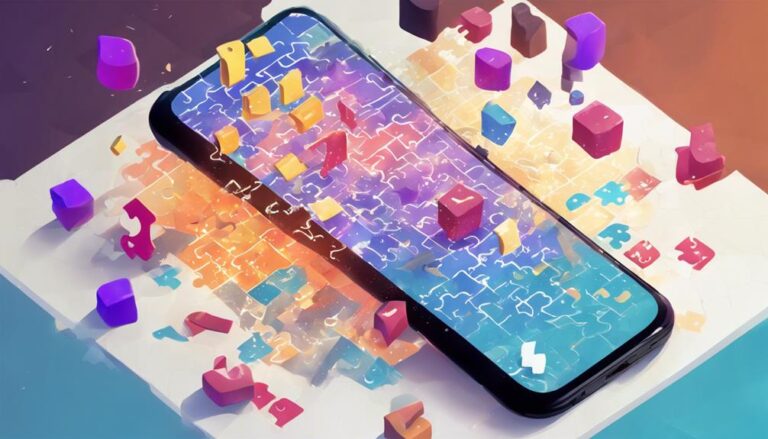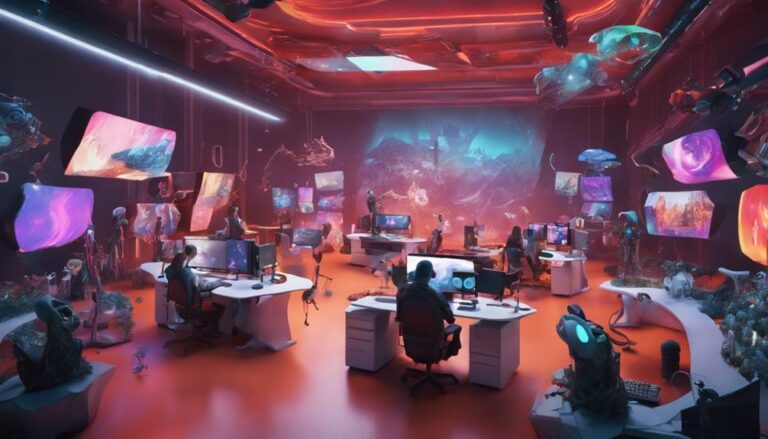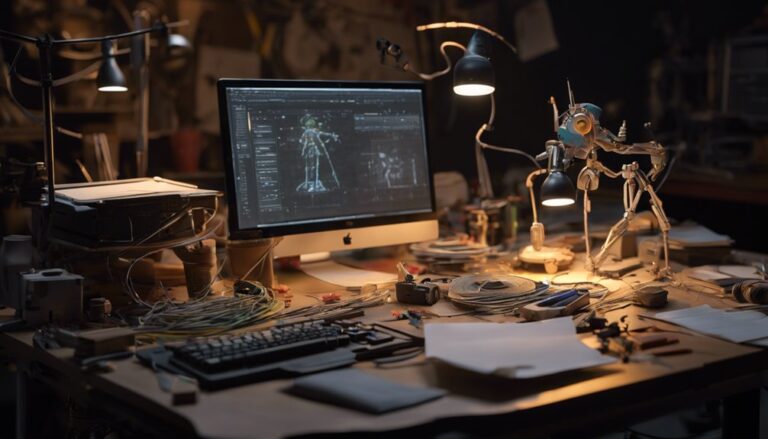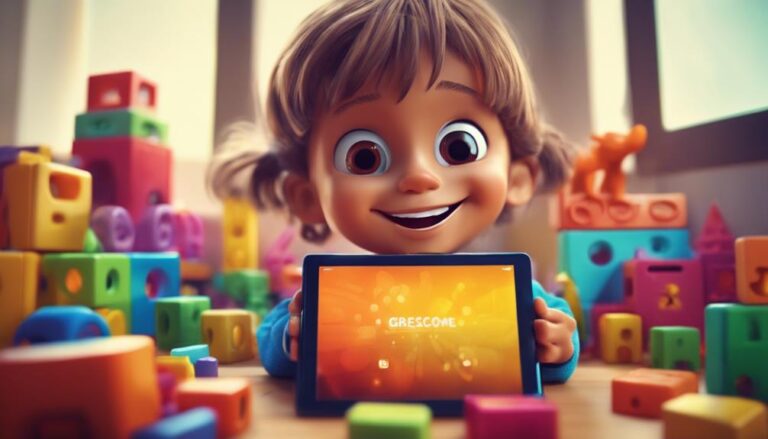7 Best Practices for Web Series Animation Character Design
When designing characters for your web series animation, it's crucial to define their purpose clearly, understanding their role in the story, goals, and motivations. Develop a unique visual style that reflects their personality, role, and cultural background, through distinctive silhouettes, vibrant color palettes, and exaggerated features. Balance aesthetics with functionality, creating model sheets that showcase various poses, facial expressions, and accessories. Also, craft believable backstories, realistic motivations, and ensure consistent character design throughout the series. By following these best practices, you'll create engaging characters that resonate with your audience – but that's just the beginning of bringing them to life.
Key Takeaways
- Define character purpose clearly, including role, goals, motivations, and what drives them in the story.
- Create believable character backstories by considering family life, life-altering experiences, and cultural norms.
- Balance design and function in character design, ensuring aesthetics serve a purpose in the narrative.
- Develop unique visual styles that reflect character's personality, role, and cultural background using distinctive elements.
- Create model sheets with detailed, 360-degree views of each character to showcase personality and traits.
Define Character Purpose Clearly
Defining a character's purpose clearly is crucial in web series animation, as it sets the stage for their entire design process.
You need to understand the character's role in the story and what they want to achieve. This clarity allows you to create a character that resonates with your audience.
Start by identifying your character's goals – what drives them, what motivates them, and what're they trying to achieve? Are they the hero, the villain, or an anti-hero?
Once you have a clear understanding of your character's goals, you can define their role in the story.
This will help you to determine their personality, behavior, and interactions with other characters. Role clarity is essential in web series animation, as it allows you to create a character that's consistent and believable.
Consider how your character will contribute to the story, how they'll interact with other characters, and how they'll evolve over time.
Develop Unique Visual Styles
| Characteristics | Description | Visual Reference |
|---|---|---|
| Distinctive Silhouette | Unconventional body shape or accessory | A character with an oversized hat or a unique pet |
| Vibrant Color Palette | Bold, contrasting colors that evoke emotion | A character with bright pink hair or a radiant yellow aura |
| Exaggerated Features | Larger-than-life eyes, lips, or facial expressions | A character with oversized eyes or an exaggerated grin |
| Cultural Inspiration | Traditional patterns, clothing, or accessories | A character with a kimono or a turban |
Balance Design and Function
As you craft unique visual styles, it's easy to get swept up in the excitement of creating bold, eye-catching characters.
But, as you design, it's crucial to strike a balance between aesthetics and functionality. A character's appearance shouldn't only be visually stunning but also serve a purpose in the narrative. Achieving this balance is key to creating characters that resonate with your audience.
Consider the character's role in the story and how their design can enhance their functionality.
For example, a character with superhuman strength might've a bulky physique to reflect their abilities. Conversely, a character with agility might've a leaner, more athletic build.
By integrating aesthetic functionality, you create a visual harmony that reinforces the character's personality and role in the story.
When designing, ask yourself: Does this element serve a purpose? Does it enhance the character's overall design?
By regularly assessing your design choices, you'll ensure that your characters aren't only visually appealing but also functional and cohesive within the narrative.
This balance will ultimately elevate your web series animation, making it more engaging and believable for your audience.
Create Believable Character Backstories
As you craft the backstory of your character, consider the subtle ways their family life influences their motivations and behaviors, from the way they interact with authority figures to their emotional triggers.
Think about the life-altering experiences that have shaped them into the person they're today – a tragic loss, a triumphant victory, or a pivotal moment of self-discovery.
Family Life Influences
When crafting character designs for your web series animation, you're not just creating a visual representation – you're forming the building blocks of a person with a rich history and complex emotions.
A crucial aspect of this process is considering the character's family life influences, which can shape their personality, values, and behaviors.
Family dynamics play a significant role in shaping a character's worldview.
– For example, a character from a large, boisterous family may be more outgoing and confident, while a character from a small, quiet family may be more introverted and reserved.
Cultural norms and traditions can also impact a character's upbringing and worldview.
– A character from a traditional, collectivist culture may prioritize family and community over personal goals and aspirations.
The character's family structure and relationships can also influence their emotional development.
– For example, a character from a single-parent household may be more independent and self-reliant, while a character from a two-parent household may be more secure and confident.
The character's socioeconomic status and family history can also shape their values and motivations.
– A character from a working-class family may be more driven to succeed and provide for their loved ones.
Life-Altering Experiences Shape
Life-altering experiences can serve as pivotal moments in a character's life, fundamentally reshaping their perspective, behavior, and worldview. These experiences can be traumatic events, joyful moments, or groundbreaking discoveries that change the way your character sees the world.
| Event Type | Character Impact | Example |
|---|---|---|
| Traumatic | Loss of trust, increased caution | Witnessing a loved one's death, being betrayed by a friend |
| Joyful | Enhanced optimism, increased confidence | Falling in love, achieving a long-held goal |
| Groundbreaking | Newfound purpose, increased curiosity | Discovering a hidden talent, uncovering a shocking truth |
| Transformative | Shift in values, new perspective | Overcoming a fear, experiencing a different culture |
When crafting your character's backstory, consider these life-altering experiences and how they've shaped your character into who they are today. Ask yourself: What pivotal moments have changed my character's perspective? How have these events influenced their behavior and worldview? By answering these questions, you'll create a rich, believable character with a compelling history that informs their actions and decisions.
Childhood Defines Personality
When crafting your character's childhood, think about the following:
- *Early relationships*: How did their family dynamics shape their attachment style and ability to form connections with others?
- *Traumatic events*: Did they experience bullying, loss, or neglect, and how did they cope with these challenges?
- *Influential role models*: Who inspired or mentored them, and what values did they instill?
- *Environmental factors*: How did their socioeconomic status, cultural background, and living situation impact their worldview?
Craft Realistic Character Motivations
Crafting realistic character motivations requires a deep understanding of what drives your characters.
You need to get inside their heads and explore the complexities of their emotional arcs. What're their desires, fears, and goals? How do these emotions influence their actions and decisions?
By creating nuanced and multi-dimensional characters, you'll be able to craft storylines that feel authentic and engaging.
To add depth to your characters, consider introducing moral ambiguity.
Give them conflicting motivations that challenge their moral compass. This will make their decisions more believable and relatable.
Think about the gray areas in their personality, the moments when they're torn between right and wrong.
These inner conflicts can lead to rich emotional arcs, making your characters feel more human and empathetic.
When developing your characters' motivations, ask yourself: What're their core values?
What do they stand for?
What're they willing to sacrifice for?
By answering these questions, you'll be able to create characters that feel real, relatable, and authentic.
This, in turn, will draw your audience into the world of your web series and keep them invested in the story.
Ensure Consistent Character Design
As you develop your web series animation characters, it's crucial to maintain a consistent visual identity throughout the series.
This can be achieved by creating a design style guide, which outlines the core elements of your characters' designs, from proportions to color palettes.
Design Style Guides
Establishing a unified visual identity for your web series animation is crucial, and creating a design style guide is a key step in achieving this consistency.
A design style guide is a comprehensive document that outlines the visual language of your animation, ensuring all characters, props, and environments are designed with a cohesive look and feel.
To create an effective design style guide, consider the following key elements:
* Color Scripts: Develop a color palette that defines the mood, tone, and atmosphere of your animation.
This will help maintain a consistent color scheme throughout the series.
- Character Proportions: Establish a set of guidelines for character proportions, including height, weight, and body shape, to ensure consistency across all characters.
- Texture and Patterns: Define the types of textures and patterns used in your animation, such as fabric, wood, or metal, to add depth and visual interest.
- Environmental Design: Outline the design principles for environments, including architecture, foliage, and props, to create a believable and immersive world.
Model Sheets Creation
To create a unified look for your web series animation's characters, you'll need to develop model sheets that provide detailed, 360-degree views of each character from multiple angles.
These sheets should include various poses, such as front, side, back, and three-quarter views, showcasing your character's model proportions and anatomy consistency. Pay attention to the character's proportions, ensuring that the head, body, arms, and legs are in harmony with each other.
For example, if your character has an exaggerated head, you'll need to balance it with shorter limbs.
When creating your model sheets, consider using a grid system to help maintain consistency. This will ensure that your character's anatomy remains consistent across different angles and poses.
You should also include various facial expressions and accessories to showcase your character's personality and traits. By having a comprehensive model sheet, you'll be able to ensure that your character's design remains consistent throughout the animation process.
This will help to reinforce your character's identity and create a more believable world for your audience.
Evolve Characters Over Time
A well-crafted character design can make or break a web series, and evolving your characters over time is crucial to keeping your audience engaged.
As your story unfolds, your characters should grow, change, and adapt to their experiences. This evolution can be showcased through subtle visual cues, such as changes in clothing, hairstyle, or accessories, or more dramatic transformations like age progression.
To effectively evolve your characters over time, consider the following:
- *Develop character arcs*: Create a narrative roadmap for your characters, outlining their growth, successes, and setbacks. This will help guide their visual evolution and ensure consistency throughout the series.
- *Show, don't tell*: Rather than relying on exposition or dialogue to convey character growth, use visual storytelling techniques to reveal their transformation.
- *Age progression*: Use subtle visual cues, such as wrinkles, gray hair, or changes in posture, to convey the passage of time and your characters' aging process.
- *Consistency is key*: Ensure that your character design evolution is consistent with their personality, traits, and narrative arc to maintain audience engagement and believability.
Conclusion
With a clear purpose, unique style, and balance between design and function, your characters come to life. Believable backstories and realistic motivations make them relatable, while consistent design keeps them recognizable. As your web series unfolds, your characters evolve, growing and changing in ways that captivate your audience. Now, with these 7 best practices, you're ready to craft characters that leap off the screen and leave a lasting impression on viewers.







